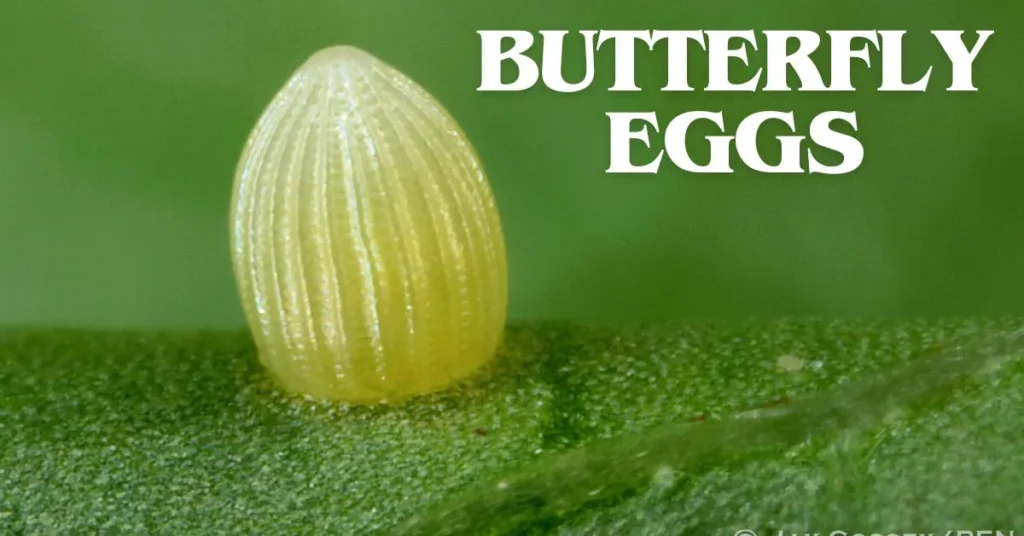Butterflies are some of the most enchanting creatures in the natural world. Their vibrant colors and delicate wings captivate our imaginations. But have you ever stopped to think about the very beginning of a butterfly’s life cycle? Yes, I’m talking about butterfly eggs. These tiny, often overlooked wonders are the starting point of the incredible transformation from egg to adult butterfly. In this article, we’ll delve into the world of butterfly eggs, exploring their characteristics, development, and importance in the butterfly life cycle.
What Are Butterfly Eggs?
Butterfly eggs are the initial stage of a butterfly’s life. They are typically laid by the female butterfly on plants that will serve as food for the emerging caterpillars. These eggs are incredibly small, often no bigger than a pinhead, and come in a variety of shapes and colors depending on the species.
The eggs are usually deposited in clusters or singly on the underside of leaves. This strategic placement helps protect them from predators and environmental factors. The female butterfly uses her sensory organs to ensure that she lays her eggs on the right kind of plant, known as the host plant, which will provide the necessary nourishment for her offspring.
The Structure of Butterfly Eggs:
Despite their tiny size, butterfly eggs are quite complex. They have a tough outer shell called the chorion, which protects the developing embryo inside. This shell is often adorned with intricate patterns and ridges, which can vary widely between species. These patterns are not just for show; they can help scientists identify the species of butterfly.
Inside the egg, the embryo develops in a nutrient-rich environment. The yolk provides the necessary sustenance for the growing caterpillar, while the chorion ensures that the egg remains hydrated and protected from the elements.
How Butterfly Eggs Are Laid:
The process of laying butterfly eggs is fascinating. After mating, the female butterfly seeks out the perfect host plant. She uses her antennae and feet to taste and smell the plant, ensuring it’s suitable for her eggs. Once she finds the right spot, she deposits her eggs one by one, often in hidden or hard-to-reach areas to maximize their chances of survival.
Each species of butterfly has its own preferred host plants. For example, monarch butterflies lay their eggs exclusively on milkweed plants, while the black swallowtail prefers members of the carrot family. This specificity ensures that the caterpillars have the right food to grow and thrive.
The Development of Butterfly Eggs:
The development of butterfly egg’s is a delicate process. After being laid, the eggs undergo a series of changes before hatching into caterpillars. This period can last from a few days to several weeks, depending on the species and environmental conditions.
Inside the egg, the embryo begins to form, developing the necessary structures to become a caterpillar. This includes the head, body segments, and tiny legs. As the embryo grows, it consumes the yolk, which provides the energy needed for development. Eventually, the fully developed caterpillar breaks through the chorion and emerges, ready to start its next stage of life.
The Importance of Butterfly Eggs in the Ecosystem:
Butterfly eggs play a crucial role in the ecosystem. They are the foundation of the butterfly life cycle, which includes the stages of egg, caterpillar, pupa, and adult. Each stage is vital for the survival of the species and contributes to the overall health of the ecosystem.
Caterpillars, which hatch from butterfly egg’s, are important herbivores. They consume large amounts of plant material, which can help control plant growth and maintain balance in the ecosystem. Additionally, caterpillars serve as a food source for various predators, including birds and other insects. This makes them an integral part of the food web.
The Threats to Butterfly Eggs:
Unfortunately, butterfly egg’s face numerous threats in the wild. Predation is a significant risk, as many animals, including ants, spiders, and birds, prey on the eggs. Additionally, environmental factors such as extreme weather conditions, pollution, and habitat destruction can negatively impact the survival rates of butterfly eggs.
Human activities, particularly the use of pesticides and herbicides, also pose a significant threat. These chemicals can destroy the host plants or directly harm the eggs and caterpillars, leading to a decline in butterfly populations. Conservation efforts are essential to protect these delicate creatures and ensure their survival for future generations.
How to Observe Butterfly Eggs:
If you’re interested in observing butterfly eggs, there are a few things you can do. First, familiarize yourself with the types of butterflies in your area and their preferred host plants. Once you know what to look for, carefully inspect the leaves of these plants, particularly the undersides, where eggs are often laid.
When you find butterfly eggs, resist the urge to touch or move them. Even slight disturbances can harm the delicate eggs. Instead, observe them from a distance and take notes or photographs to document your findings. With patience, you may even witness the eggs hatching into tiny caterpillars, beginning their journey through the butterfly life cycle.
Raising Butterflies from Eggs:
Raising butterflies from eggs can be a rewarding experience. If you’re interested in trying this, start by identifying and collecting butterfly eggs from your garden or a safe, pesticide-free area. Once you have the eggs, place them in a container with fresh leaves from the host plant.
Keep the container in a warm, humid environment and ensure a constant supply of fresh leaves for the caterpillars to eat once they hatch. As the caterpillars grow, they will molt several times before pupating and eventually emerging as adult butterflies. Releasing these butterflies back into the wild can help support local populations and contribute to conservation efforts.
The Role of Butterfly Eggs in Conservation:
Butterfly egg’s are an essential focus of conservation efforts. By protecting and nurturing these early stages of butterfly development, we can help ensure the survival of these beautiful insects. Conservation programs often include planting native host plants, creating butterfly-friendly habitats, and reducing the use of harmful pesticides.
Educating the public about the importance of butterfly eggs and their role in the ecosystem is also crucial. By raising awareness and encouraging participation in conservation activities, we can all contribute to the protection and preservation of butterfly populations.
Conclusion: The Tiny Marvels of Butterfly Eggs
Butterfly egg’s are remarkable in their complexity and importance. These tiny wonders are the starting point for one of nature’s most extraordinary transformations. From the careful selection of host plants to the intricate development process, butterfly egg’s play a vital role in the life cycle of butterflies and the health of our ecosystems.
By understanding and appreciating the significance of butterfly eggs, we can take steps to protect these delicate creatures and ensure their continued presence in our world. So next time you see a butterfly fluttering by, remember that it all started with a tiny, unassuming egg. And who knows? Maybe you’ll be inspired to look a little closer and discover the hidden world of butterfly egg’s for yourself.







